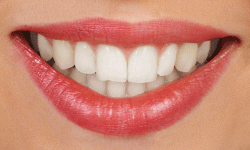At Banasiak & Nettune, we offer a comprehensive selection of orthodontic techniques to help you achieve straighter teeth. Our experienced Basking Ridge orthodontist offers the latest and most effective options to optimize your comfort and results. By evaluating your anatomic needs and listening to your cosmetic goals, we can develop a customized treatment plan that provides the best possible experience for you. Find out more about our array of options below, and contact us today for more information or to schedule a complimentary consultation.
- Metal Braces Overview
- Metal Braces Benefits
- Metal Braces Procedure
- Metal Braces Cost
- Metal Braces Alternatives
- Metal Braces Pain
- Metal Braces & Flossing
- Metal Braces Results
- Metal Braces With Retainer
- Additional Metal Braces FAQs
What Are Traditional Metal Braces?
 Typically the most recognizable type, metal braces are one of the most common options for teeth straightening. While earlier versions of this treatment were associated with discomfort, modern enhancements have made numerous improvements in the design. Comprised of high-quality, self-ligating stainless steel metal brackets and archwires, our “traditional” braces should feel far more comfortable than the metal braces of the past. Furthermore, you can customize the look by choosing either metal or clear self-ligating brackets.
Typically the most recognizable type, metal braces are one of the most common options for teeth straightening. While earlier versions of this treatment were associated with discomfort, modern enhancements have made numerous improvements in the design. Comprised of high-quality, self-ligating stainless steel metal brackets and archwires, our “traditional” braces should feel far more comfortable than the metal braces of the past. Furthermore, you can customize the look by choosing either metal or clear self-ligating brackets.
What Are the Benefits of Metal Braces?
In addition to achieving straight teeth and a more beautiful smile, self-ligating metal braces offer a multitude of benefits. Metal braces are strong and durable, and they can handle the sometimes tough treatment of kids, teens, and adults better than many other forms of orthodontics. Fewer problems due to damage can mean a quicker treatment, which everyone loves. Metal braces may also be the least expensive option, depending on your unique treatment plan. Traditional metal braces are designed to address virtually all forms of misalignment, so even complex cases can often be improved with excellent results. Finally, although most people do not think of metal braces as the most cosmetically appealing option, the self-ligating system does offer clear brackets as a less noticeable alternative. Other benefits may also apply to you. We can help you determine if self-ligating metal braces or another procedure are the best fit for your needs and lifestyle.
How Do Traditional Metal Braces Work?
Teeth that are out of alignment need a little help finding the right position. This is achieved with gentle continuous pressure. Our traditional metal braces have a self-ligating system that is considered more advanced than previous versions of traditional braces. The system works faster due to less friction and requires less frequent appointments with the orthodontist since the braces self-tighten. Brackets are placed on the teeth, one per tooth, and an archwire is attached to help guide tooth movement. The archwire is held in place with self-ligating metal brackets without the use of ties or rubber rings. Other components may be used as well to help achieve the desired outcome, and our dentists will go over the treatment with you in detail so you know what to expect.
How Much Do Metal Braces Cost?
A multitude of factors go into the price of braces, and your treatment plan may vary in cost from someone else’s for many reasons. According to the Journal of Clinical Orthodontics, the average cost for braces is between $5,000 and $6,000. However, these numbers may not reflect the average price at our practice. Dental insurance often helps cover the cost of braces, but coverage is different from plan to plan, so you should check with your insurance agent to determine your benefit amount. We believe everyone should have access to a healthy smile, and we can help you find a payment plan that best suits you. We offer many options, including financing, to allow you to make the decision for your household.
[rmrrsc type=”single” reviews=”494834235887681754.GOOGLEMYBUSINESS-1166203664″]
What Are My Other Braces Options?
Ceramic Braces
 If metal is too bold for you, our ceramic braces may be the right choice. The materials are more transparent and therefore less noticeable. Older teens and adults typically prefer this style for cosmetic reasons. It’s important to note that good oral hygiene is essential with ceramic braces. The brackets are also slightly larger, and the material can be more fragile than traditional metal appliances. As a result, ceramic braces are more commonly placed on the top front teeth to reduce the amount of wear and tear. Ceramic braces are a great choice for many individuals, and we are happy to discuss the benefits with you at your appointment.
If metal is too bold for you, our ceramic braces may be the right choice. The materials are more transparent and therefore less noticeable. Older teens and adults typically prefer this style for cosmetic reasons. It’s important to note that good oral hygiene is essential with ceramic braces. The brackets are also slightly larger, and the material can be more fragile than traditional metal appliances. As a result, ceramic braces are more commonly placed on the top front teeth to reduce the amount of wear and tear. Ceramic braces are a great choice for many individuals, and we are happy to discuss the benefits with you at your appointment.
Invisalign®
Clear, comfortable, and convenient, Invisalign® teeth aligners are inconspicuous and can be removed so you can eat, drink, brush, and floss. The nearly invisible orthodontic appliance has no metal parts, which can reduce discomfort throughout the treatment process. To achieve the desired result, you will wear a series of customized clear aligners that gradually straighten your teeth and improve bite alignment.
Self-Ligating Brackets
Self-ligating braces, available from several brands, typically offer a faster, more comfortable treatment experience than traditional braces. To give you a choice in style and to better fit your needs, self-ligating braces come in both metal and clear models. The brackets require no elastics and cause little to no pressure on the teeth. The revolutionary orthodontic design provides a more hygienic experience, as well. As a result, you can achieve straighter, more beautiful teeth with less hassle.
Do Braces Hurt?
Metal self-ligating braces are generally described as causing no pain when applied to patients’ teeth; however, patients may experience slight soreness and general discomfort for a brief transition period after they initially receive their braces and when the braces are adjusted. Any soreness or discomfort is usually a sign that the braces are working and adjusting the teeth to a straighter position and should dissipate within a few days.
How Do I Floss with Braces?
Flossing with braces can appear to be a difficult task at first. Generally, patients who have received braces can successfully floss with a floss threader or a special orthodontic floss that is designed to reach the area behind the archwire. The first step is to pass the threader and floss behind the archwire, between two teeth. Then slide the floss back and forth in the sides of the tooth to remove any plaque or unwanted food particles. Patients should do this for each tooth, making sure to floss below the gumline.
How Long Do Braces Take to Straighten Teeth?
The time it will take for self-ligating metal braces to show results will vary for each patient as the status of each individual’s teeth will be different when they start their treatment. Patients can expect optimal results anywhere between six months and two years. At the initial consultation, your orthodontist will be able to better predict how long you will need to wear braces based on your specific situation.
Will I Need a Retainer After Braces?
Patients will need to wear a retainer for an extended period of time after braces. Retainers are important for the treatment and maintenance of the new alignment of teeth. Following the removal of braces, patients are instructed to wear their retainer full-time for less than a month, except for mealtimes and cleanings. Thereafter, patients are recommended to wear their retainer every night indefinitely. In other words, patients should be wearing their retainer at nighttime for a lifetime.
Frequently Asked Questions About Metal Braces
Can I play sports while wearing braces?
You should be able to continue to play sports while wearing braces. However, you should take extra care to protect your teeth and your braces during these activities. Any damage involving the teeth, oral tissues, and the brackets and wires themselves can be both painful and expensive. Wearing a mouthguard during sports activities, particularly contact sports, can help protect your teeth from the risks of a possible facial impact.
Will braces interfere with playing an instrument or singing?
If you sing or play a musical instrument, braces should not impede you from either activity. With that in mind, there may need to be an adjustment period when you engage in these activities for the first time after your braces are placed. Ultimately, it usually does not take long for the mouth to get used to the braces for most individuals.
What can you eat with braces?
There are some foods that you should avoid while wearing braces. While most patients are generally able to continue eating many of their preferred foods, it is important to be sure that your diet includes softer options that are less apt to get stuck in your braces or create other dental issues. Smoothies, pasta, eggs, and many other soft-food items are part of a broad selection of delicious options that are perfectly safe to eat while wearing braces. Harder or stickier foods–such as candy, popcorn, caramels, chewing gum, and others–should typically be avoided as they can cause significant problems. Our team can provide you with a list of foods to be wary of, as well as options that should pose no problem at all with your braces, once your treatment plan is in place.
Should I use a manual or electric toothbrush for braces?
Manual and electric toothbrushes are both viable options for brushing teeth with braces. There are also specific toothbrush sets designed for cleaning braces. These special toothbrushes often have soft and flexible bristles that are able to get to areas around the brackets that can be difficult to reach with a standard toothbrush. We can advise you on the best oral care options for braces and provide you with guidance on the most effective way to keep your teeth fresh and clean.
Will any teeth have to be extracted before I get braces?
Extracting teeth is not a requirement for all patients before braces are placed; however, some individuals may need to have one or more teeth removed to achieve the best results. This may be necessary in cases of extreme crowding of the teeth in certain areas—tooth extraction can allow sufficient room for the realignment of surrounding teeth. During the initial consultation, our orthodontist can determine whether you will need a tooth extraction before the braces are placed.
If you’d like to talk more about how braces can help you achieve straighter teeth, contact our office today. We can answer your questions or help you schedule a complimentary consultation with one of our orthodontists.




 Basking Ridge
Basking Ridge
